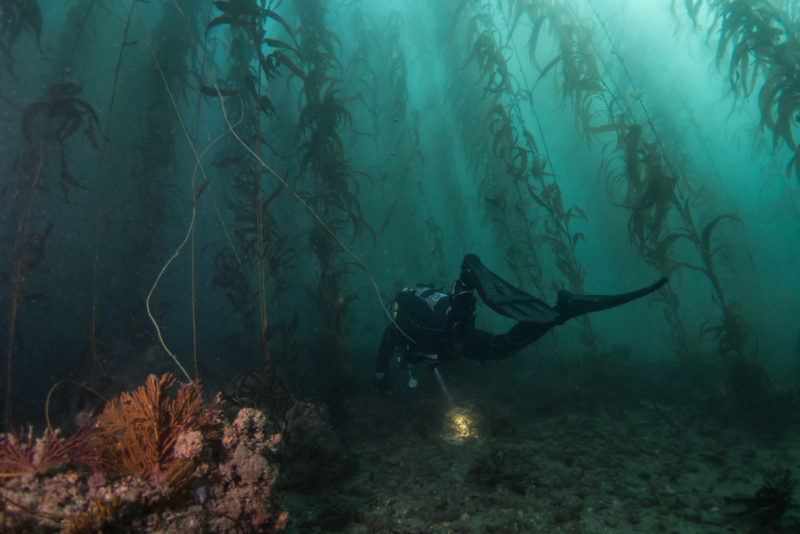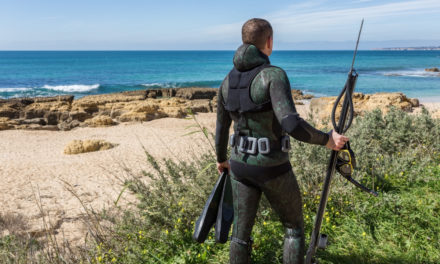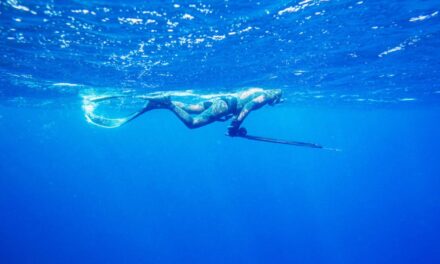The yellowtail is one of the most popular fish to hunt for. It’s highly prized for both recreational hunting as well as commercial value. It’s mostly consumed as sashimi but it can also be prepared and eaten in a variety of other ways like grilling or drying.
The yellowtail kingfish is sometimes regarded as the toughest fish to catch in the sea. However, if you’re up to the challenge, with the right preparation, gear, and techniques, you will be rewarded with really big prizes.
Facts about the Yellowtail
The yellowtail, commonly known as the yellowtail kingfish or the yellowtail amberjack, is a type of fish from a species known as “Seriola lalandi”. Other names for it include southern yellowtail, kingy, and hoodlum.
The yellowtail is a large fish with a body shaped like a torpedo and a forked tail. Its color is dark blue or greenish blue on the top part and silvery white on the lower part. It has a yellow tail and a dusky yellow strip on the side at the midline that extends from the snout through the eye. Each of its eyes has a dark bar extending through them.
The fish has an average length between 80 and 100 cm and can reach a maximum of up to 250 cm. It usually weighs between 15 and 40 kg but could reach up to 96.8 kg at maximum. Juveniles rapidly grow to reach 2 to 3 kg in just a year but they’re hard to find in the wild.
Kingfish’s main source of food is small fishes. It feeds on piper, squid, garfish, octopus, koheru, gastropods, crab, cuttlefish, krill, bivalves, and prawns.
Where and When to Find the Yellowtail
As its southern yellowtail amberjack suggests, this fish is mainly found in southern hemisphere waters. Nevertheless, you might find it in northern hemisphere waters at certain times of the year.
According to fishbase.org, Yellowtail is distributed in different parts around the globe in subtropical and temperate waters. In the Indo-Pacific, you can find it in places like Australia, New Zealand, Japan, South Africa, Hawaii, Amsterdam Island, Easter Island, and Walter Shoals. It also lives in the Easter Pacific waters all around the area from Canada to Chile as well as British Columbia.
Good places to hunt for yellowtail is in Australia, where it’s commonly found all year round around southern Australia and extends to Queensland, Shark Bay, and Western Australia. It’s also available in the southeastern parts of the Tasmanian coast, in Lord Howe Island and Norfolk Island, during the warmer months. Recently, the kingfish have been increasingly present in Victoria and Port Phillip Bay.
New Zealand waters are also known to have some of the biggest yellowtail kingfish in the world where it can be hunted from the North Island to the Deep South starting from early October to April.
Another great area to go to for yellowtail spearfishing throughout the year is in Southern California. There are a bunch of good places to have a good catch of yellowtail, commonly off the coast of Santa Barbara, at San Clemente Island, Catalina Island, and the Channel Islands. Major areas in San Diego and Mexico waters include the Coronado Islands, Palos Verdes Peninsula, La Jolla Kelp, Horseshoe Kelp, and the area between Oceanside and Dana Point. Yellowtail populates these areas all year round but usually, fishing begins in late Spring and continues through Fall in November.
The yellowtail kingfish is a pelagic or benthopelagic fish. It usually resides in schools at inshore and offshore areas. Sometimes, it can also be found in small groups or even alone under drifting kelp mats. They hang in depths ranging from 3 to 50 m.
The adult fish is found in shoals in coastal waters near deep and rocky reefs and outcrops, or around pinnacles and offshore islands as well as oil platforms and structures. It’s also seen near jetties and pylons in bays and harbors. Large schools of hundreds of young fish go to estuaries, while small fish live offshore around floating debris and algae and is extremely had to find.
A nice way to try to find good spearfishing spots for the yellowtail kingfish is to use fisheries fishing apps alongside google maps. Depending on the state or area you’re fishing in, you should use the fisheries app relevant to it. These apps will give you all sorts of useful information about the zones and areas the fish is likely to live and the kind of places they tend to hang. Once you find a good area, make sure to also check whether spearfishing is prohibited in it or not.
How to Spearfish the Kingfish
The prime places to fish for yellowtail is on points and pinnacles or places with currents that are filled with baitfish or near navigational buoys and rocky structures.
The yellowtail is an extremely curious fish by nature, which plays as a great advantage when hunting for it. They are really easy to lure as they are attracted by the slightest movements or noises.
Equipment
Having the right equipment is really important when it comes to spearfishing a strong and powerful fish like the yellowtail that is sure to give you a worthy fight, so be prepared for it.
The ideal gear to have for this task is a speargun with adequate size, a sufficient float with a hardline and a bungee, some flasher rigs attached to the float, and a sharp knife.
In order to provide you with accuracy and a good range, a speargun with a size of 120 to 140 cm with multiple rubbers will give you a suitable shooting range and ensure the spear will pierce through the fish. Longer guns will be hard to swing in the water and maintain your aim as the kingfish moves quickly. You also need to balance the shaft with the gun, it should be made from high-quality hardened steel to prevent it from being broken or bent by the fish and should not exceed 7.5mm in thickness. A breakaway rig to disengage the shaft with the shooting line from the gun is a good option to have to protect the gun from being dragged off if the fish is fighting too hard.
The float must be sturdy and the float line should be at least 4mm thick to have a good grip of the fish. The bungee inserted between your float line and the gun will help you absorb the strain and keep the fish away from reaching the bottom to dislodge the shaft or tangling the line and freeing itself.
The flasher rigs attached to the float are the bait that will lure the yellowtail up from the bottom closer to the surface to be within your shot range. You can use either drop flashers or inline flashers.
The knife is used in case of emergencies to cut the line if it gets tangled up around you.
Technique
First, you need to slowly dive near the fish without making eye contact with it but don’t dive too deep. Use the flashers to imitate the baitfish and attract the kingfish’s attention. Avoid diving directly towards them, try to dive in the direction parallel to them or away from them instead and don’t make any sudden and aggressive moves that would spook them.
Take your time to lock your target fish in your peripheral vision. Make your approach within a good shooting range while keeping your gun underneath you and lung towards the fish. Don’t shoot from too far away as the spear won’t penetrate the thick fish.
When you’re at a close range, extend your arm and shoot. A well-placed shot will increase your chances of catching the kingfish. It should be in the green area above the yellow strip behind the gill plate in order to have a solid holding.
The kingfish is very strong and keeps fighting violently as it can break the spear and tangle the lines. The next step is to prevent it from dislodging the spear so you need to keep it away from any reefs, rocks, or structures. It will keep swimming in circles so you have to do the same so you wouldn’t become entangled. Keep applying pressure to the fish to steer it and tire it, all while keeping the line away from your body.
As soon as the fish is worn down, get close to it and hold your legs around it while grabbing it with your hands from under the gills. This should finish it. Be careful to stay away from its head as it throws it around, which could seriously injure you, and stay away from the spear tip as well.
Regulations
Depending on the area you’re spearfishing in, bag and size limits differ.
The bag size is usually between 3 and 10 fish per day. Up to 5 fish could be less than 60 cm while the rest should have a minimum size ranging from 60 to 75 cm.




![A Guide To Freediving Gear [For The Beginner]](https://spearoscout.com/wp-content/uploads/2019/03/Spearfishing-freedivng-440x264.jpg)
